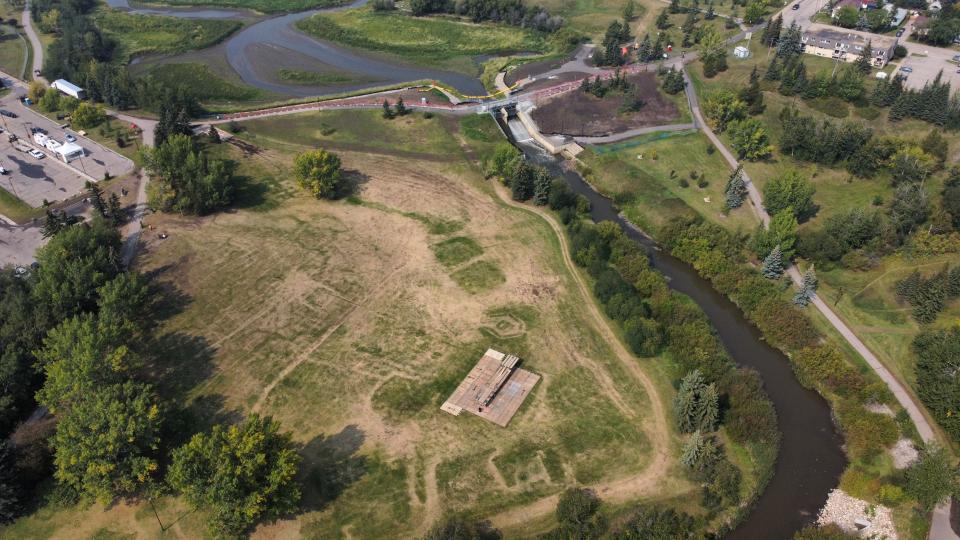
The Bear River Control Structure, located in Muskoseepi Park, is a vital piece of infrastructure requiring maintenance and upgrades to ensure its long-term integrity and performance.
Although the structure, commonly referred to as the Bear Creek Dam, seasonally retains water, it no longer functions as a traditional reservoir due to reduced water storage capacity and the relocation of the City’s drinking water source.
With the dam's concrete and structural components projected to reach the end of their lifespan in approximately 30 years, a major capital project will eventually be required to renew both the structure and the earthen dam.
For details on the maintenance and future upgrade plans for the Bear River Control Structure, please review the project stages outlined below.
Project Stages
Initial maintenance and safety upgrades began in 2022 due to findings from a routine Dam Safety Inspection in 2018, which identified several deficiencies that needed immediate attention to ensure safety and compliance.
Completed Works:
Vegetation and Tree Management: Large trees and most vegetation within the designated red boundary were removed in summer 2023. This was crucial to prevent water movement through the dam, which could lead to structural failures.
Concrete and Structural Repairs: Comprehensive repairs of the concrete throughout the dam and erosion damage repairs were completed by fall 2023.
Staircase and Pathway Enhancements: The staircase on the north side of the spillway and the adjacent failing retaining wall were replaced by winter 2023. A new pathway to access the improved pedestrian lookout at the bottom of the spillway was partially completed, with full completion expected soon.
Lighting and Accessibility Upgrades: Additional lighting along the pathway and staircase, and the installation of accessible benches along the shoreline were completed to enhance safety and accessibility.
Ongoing and Future Works:
Spillway Equipment Upgrades: Repairs and replacements of mechanical and electrical equipment in the spillway are ongoing to ensure operational efficiency and safety.
Armouring: After discovering the lack of sufficient armouring previously masked by vegetation, this work has been prioritized to prevent potential dam failure.
Bear River Control Structure Armouring Work Underway
The Bear River Control Structure is currently undergoing an armouring upgrade to strengthen the dam’s surface and protect against erosion, overflow and structural impact—an essential maintenance task.
Construction began in fall 2025 and is scheduled to be complete around November 6, weather permitting. This is planned, routine maintenance and is not related to any emergency or new decisions about the dam due to the feasibility study.
Key benefits of dam armouring include:
- Protection Against Extreme Weather: Climate change is causing heavier rainfall and more frequent extreme weather, increasing the risk of high water flow and overflow in dams. Armoring helps protect against erosion and withstands stronger water pressure and speed.
- Improved Safety and Structural Strength: Over time, armoring materials can wear down due to weather, use, or exposure to chemicals. Upgrading these materials ensures the dam stays strong and safe, reducing the chances of failure.
- Longer Dam Lifespan: Improved armoring helps protect the dam from erosion and other damage, extending its useful life and lowering future maintenance costs.
- Meeting Safety Standards: As safety regulations change, dams need upgrades to meet new requirements. Armoring improvements help ensure the dam complies with the latest safety and environmental standards.
- Protecting the Environment: Erosion or failure can release contaminants into the environment. Better armoring reduces these risks by keeping the dam stable and preventing water quality problems.
- Cost Savings: Investing in upgrades now can avoid expensive repairs later and reduce the financial risks associated with dam failures and possible legal issues.
The City of Grande Prairie is conducting a reservoir feasibility study to develop a long-term vision for the dam structure and the historic reservoir. The study will be undertaken by a consultant and will look at:
- Safety Assessment:
- Structural Integrity: Aging dams can deteriorate, increasing failure risk. The study will assess key elements like the foundation, spillway and embankments to inform end-of-life decisions.
- Seismic and Flood Risks: Older dams may not meet today’s standards for earthquake and flood resilience. The study will check if upgrades are needed to improve safety.
- Environmental Impact:
- Habitat Restoration: Removing or modifying a dam can restore natural river flows, supporting fish migration and aquatic ecosystems. The study examines possible ecological benefits.
- Sediment Management: Dams trap sediment, which can cause ecological issues. The study will assess sediment levels and how removal or redistribution might affect downstream areas.
- Cost-Benefit Analysis:
- Maintenance vs. Decommissioning Costs: The study compares the costs of maintaining/upgrading the dam versus removing or repurposing it.
- Alternative Uses: It will also explore other potential uses, such as renewable energy, recreation, or flood management and the associated economic benefits.
- Regulatory Compliance and Legal Requirements:
- Updated Standards: Safety and environmental regulations may have changed since the dam’s construction. The study will identify necessary actions for compliance.
- Stakeholder and Community Engagement: The study includes input from stakeholders like local communities, environmental groups and regulators to ensure all concerns are addressed in the decision-making process.
As part of the study, residents may notice equipment activity in the area behind the control structure , commonly referred to as 'the Reservoir'', on May 20 and 21. The City has hired a contractor to conduct geotechnical testing, which involves collecting soil samples from multiple locations using an excavator. This work is expected to take one to two days and will help inform the technical aspects of the feasibility study.
- Safety Assessment:
Addressing Community FAQ's
The gates were opened following maintenance to prevent water retention due to insufficient armouring, ensuring the structural integrity of the dam. Natural silt deposits and vegetation have allowed the area to revert to it's natural state prior to it's use a water reservoir many decades ago.
The City maintains a constant downstream flow as required by the Water Act approval, ensuring that wildlife and environmental impacts are minimized. The fluctuating water levels have enhanced the habitat, providing more forage and nesting areas for local wildlife.
While the current appearance may seem stark, the natural wetland environment is vital for diverse species. The city recognizes the concerns and is exploring options to enhance the visual aspects without compromising the ecological value.
The Bear River Control Structure has minimal impact on the upstream river valley, with the influence zone typically ending near Centre 2000.
Historical Insight: Bear Creek Dam
The Bear River Control Structure (BRCS), originally built in 1948, was established to create a reliable drinking water reservoir for Grande Prairie. Initially, the dam supported the City's development and enhanced community safety by providing water for consumption and firefighting.
By 1963, following the construction of a water treatment plant that drew water from the Wapiti River, Grande Prairie's reliance on the Bear River as a water source decreased. The control structure underwent significant reconstruction in 1975, resulting in the structure that exists today. Since then, the only major work has been the replacement of the gates in 2008.
Although no longer used for drinking water, the body of water behind the dam is still commonly referred to as a 'reservoir.' However, this designation does not reflect its natural state. Over the years, the area has transformed through natural processes into a small floodplain, accumulating silt and sediment rather than functioning as a water storage area. This evolution highlights the dynamic nature of our environment and the adaptive roles of our infrastructure.
Image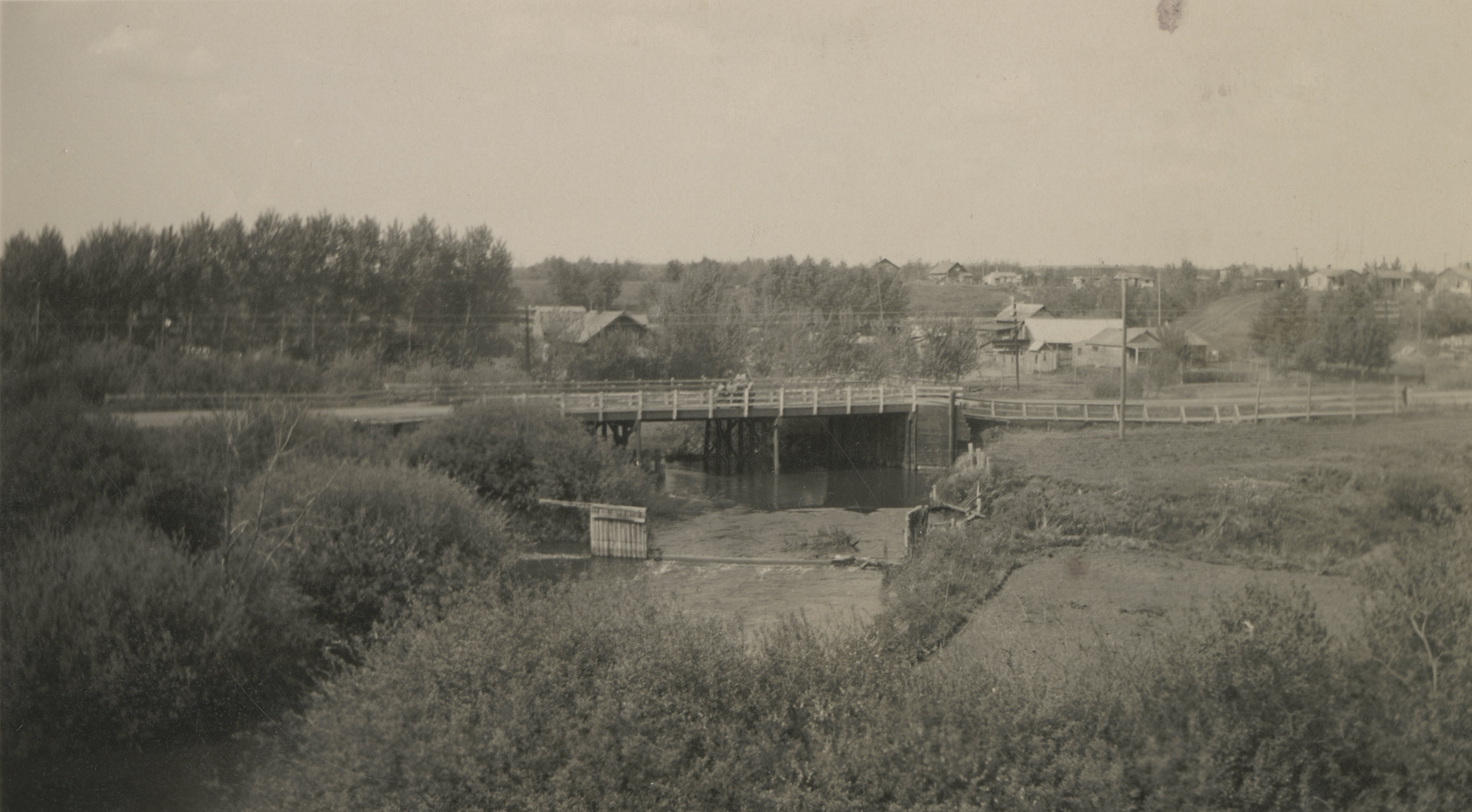
Photo Source: Peace Regional Archives 1989.39.1b (reference 1969.59.535)
Significant upgrades to Grande Prairie's water infrastructure were initially spearheaded by the City, enhancing reliability and sustainability through the modernization of old water lines and the incorporation of advanced technologies. Following these foundational improvements, Aquatera Utilities Inc. continued the advancements. These enhancements collectively reduced the city's dependence on the historical Bear Creek Dam, allowing for the repurposing of the dam area into a recreational and ecological space. This transformation reflects a strong commitment to environmental stewardship.
Image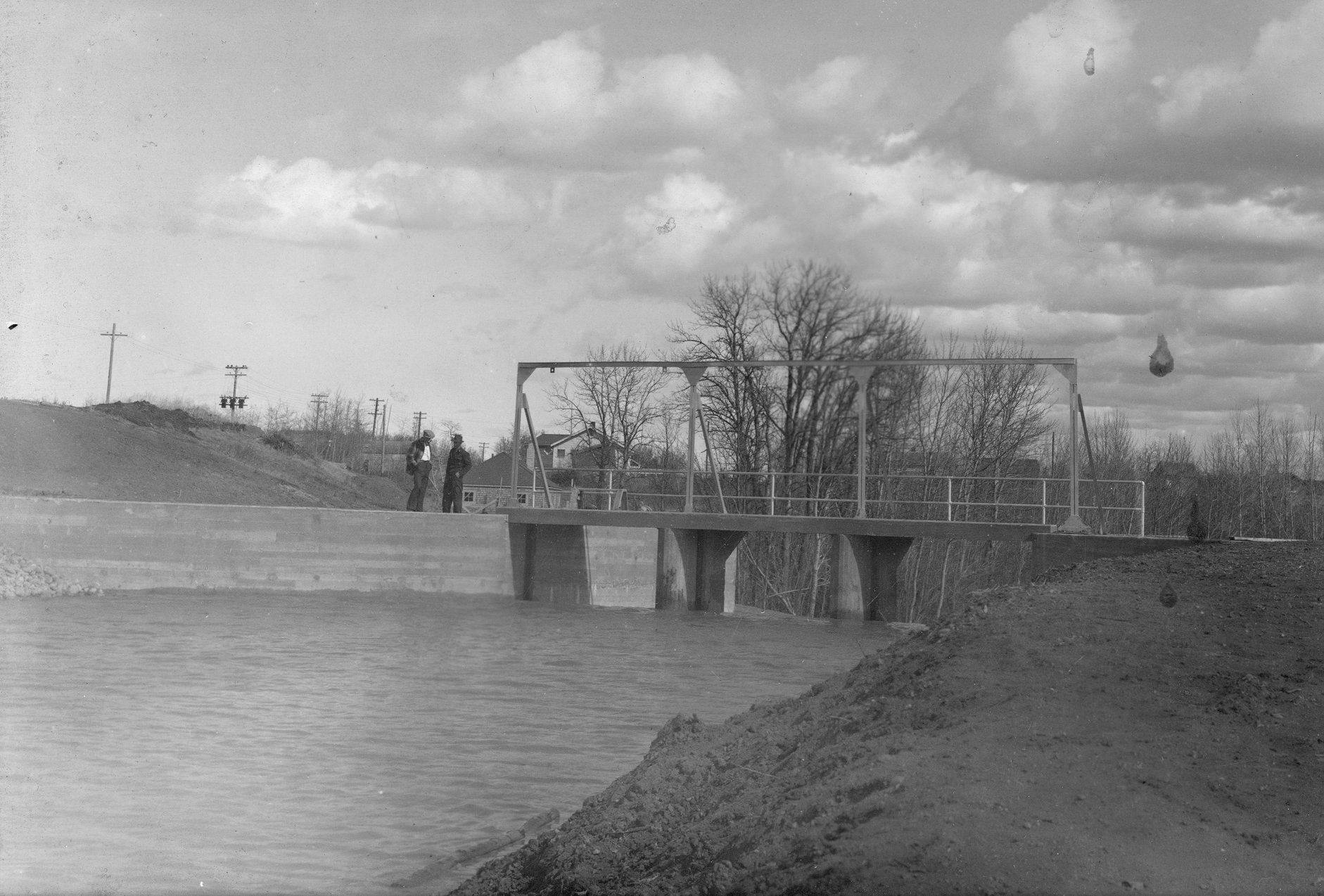
Photo Source: Peace Regional Archives 1989.39.1b (reference 1989.39.1b)
- Image
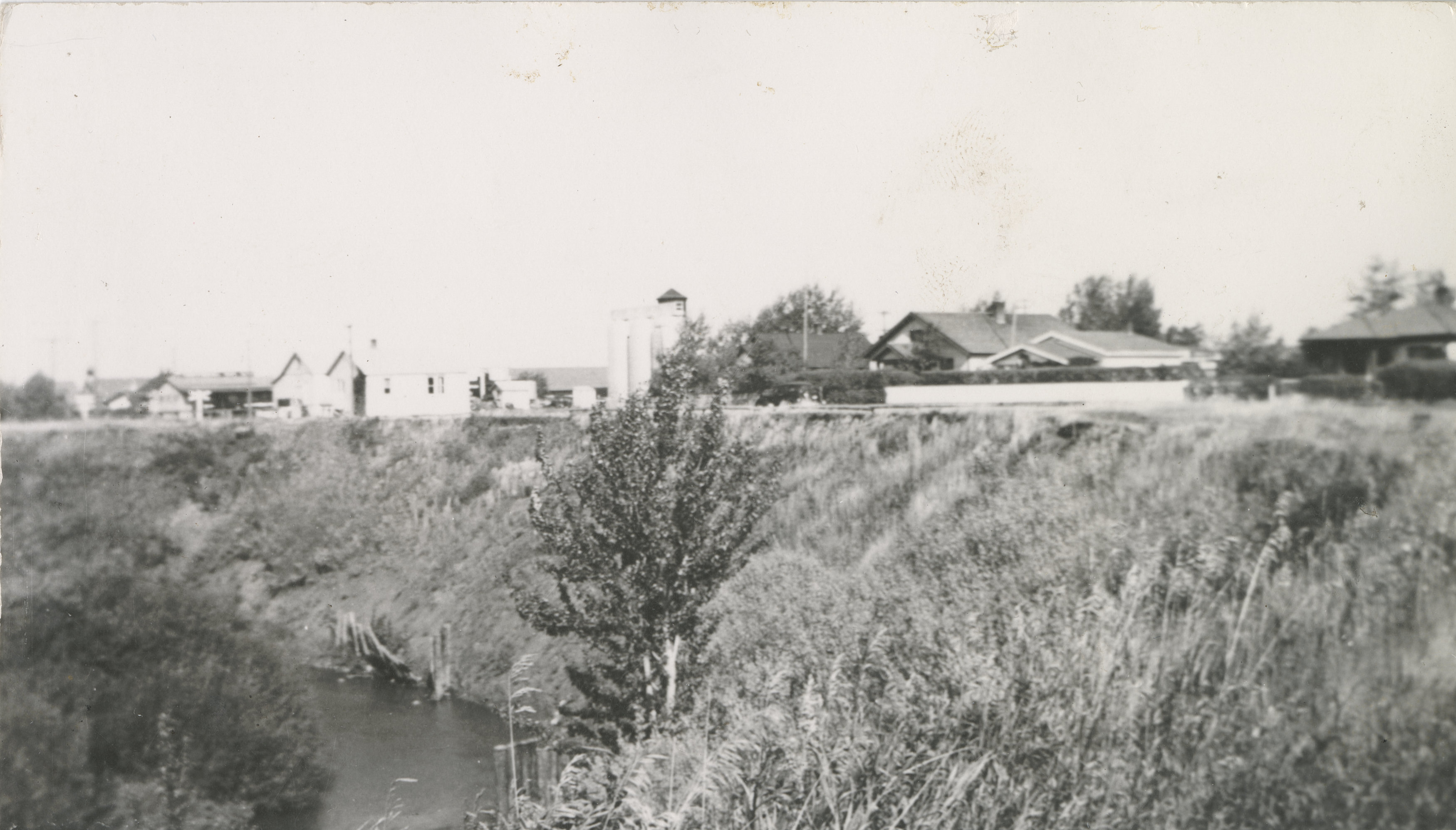
Photo Source: South Peace Regional Archives (reference 1969.21.72)
While the Bear Creek Dam no longer functions as an active drinking water reservoir, it has sparked significant discussions regarding the management of both water retention and water levels. Today, the area surrounding the dam, now part of Muskoseepi Park, has transformed into a vital recreational and natural hub for the community, weaving this historical infrastructure into the city’s expansive green space network.
The image below captures the Bear Creek area before the creation of the reservoir. What you see here is the land in its natural, untouched state—long before it was transformed by the dam. As we work to return this area to its original beauty, we invite you to reflect on its historical significance and natural heritage. This restoration is not just about preserving our environment, it's about honoring our past."
Image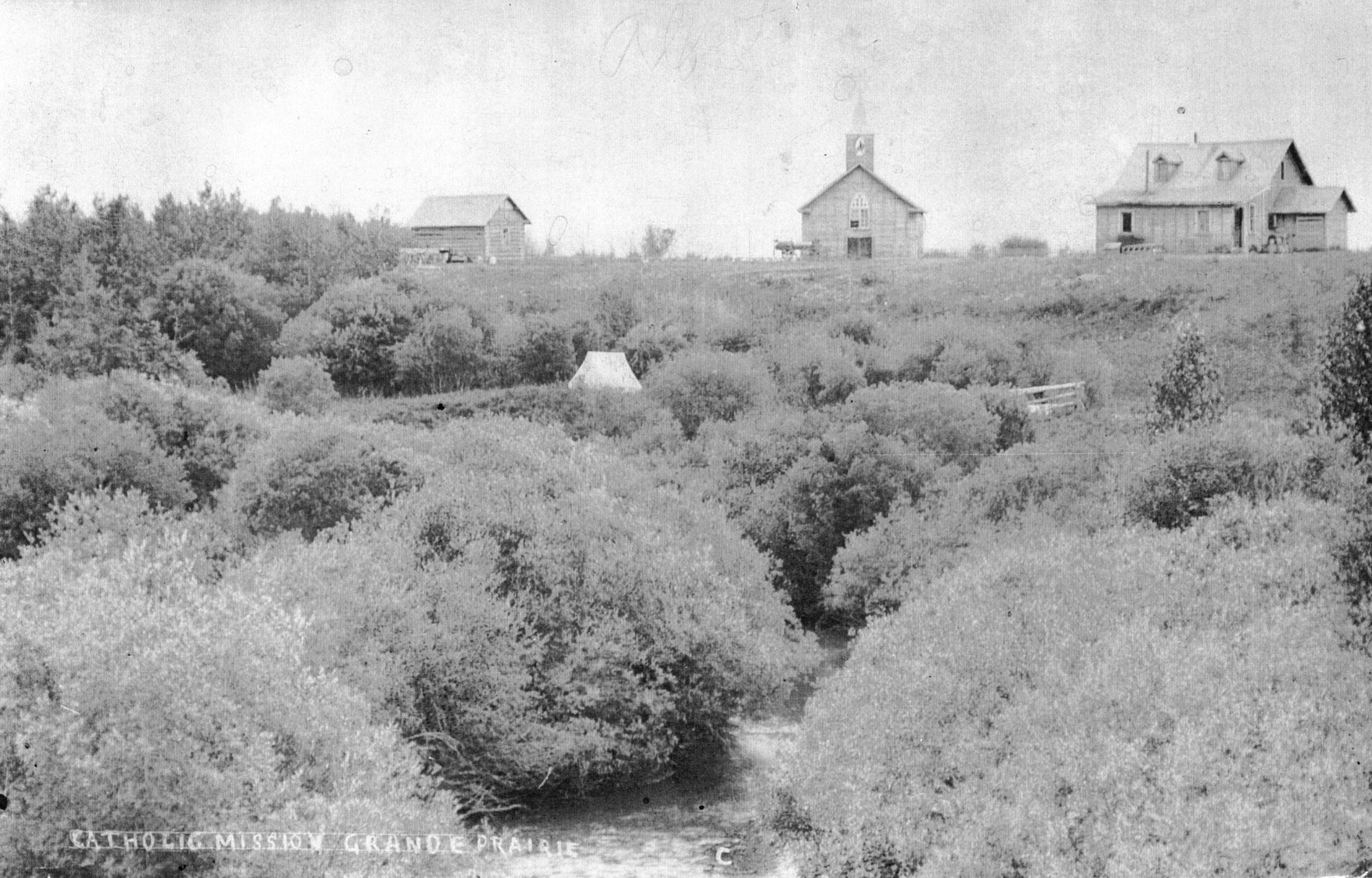
Photo Source: South Peace regional Archives (reference 1998.08.04)
As the Bear River Control Structure transitions from its original roles, ongoing assessments and maintenance underscore its continued relevance as a key piece of infrastructure, critical for ensuring public safety and preserving its structural health.
As work on the Bear River Control Structure continues, we are committed to ensuring the highest standards of safety and environmental stewardship. The City of Grande Prairie appreciates the community's patience and support as we enhance this crucial infrastructure for current and future generations. Stay tuned for further updates as we progress toward a safer and more resilient community infrastructure.
